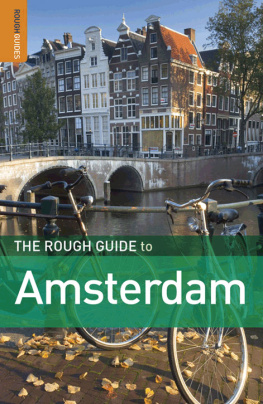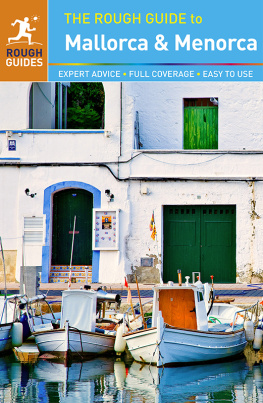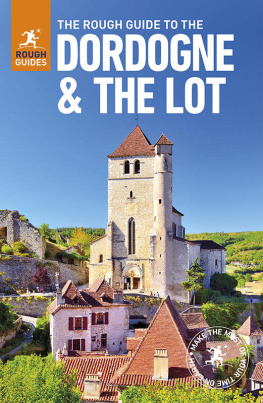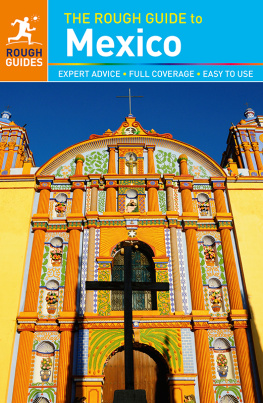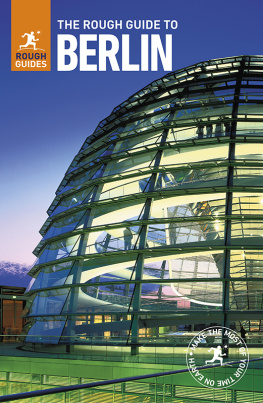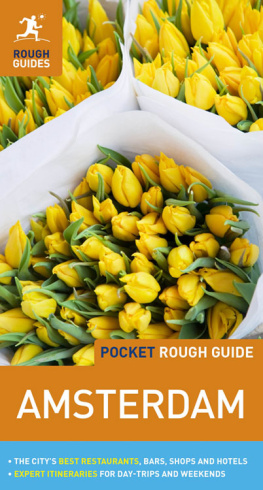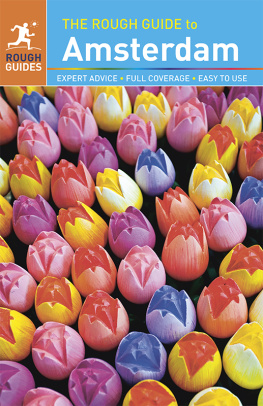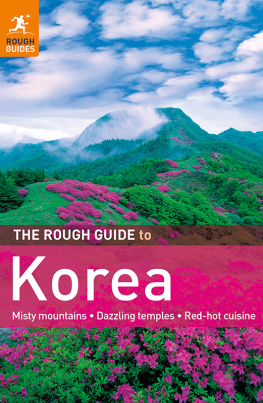Publishing information
This tenth edition first published January 2010 by
Rough Guides Ltd, 80 Strand, London WC2R 0RL
14 Local Shopping Centre, Panchsheel Park, New Delhi 110017, India
Distributed by the Penguin Group
Penguin Books Ltd, 80 Strand, London WC2R 0RL
Penguin Group (USA) 375 Hudson Street, NY 10014, USA
Penguin Group (Australia) 250 Camberwell Road, Camberwell,
Victoria 3124, Australia
Penguin Group (Canada) 195 Harry Walker Parkway N, Newmarket, ON, L3Y 7B3 Canada
Penguin Group (NZ) 67 Apollo Drive, Mairangi Bay, Auckland 1310, New Zealand
Cover concept by Peter Dyer.
Martin Dunford, Phil Lee and Karoline Thomas
ISBN: 978-1-84836-515-5
Maps Rough Guides
No part of this e-book may be reproduced in any form without permission from the publisher except for the quotation of brief passages in reviews.
This Digital Edition published 2010. ISBN: 9781405382663
The publishers and authors have done their best to ensure the accuracy and currency of all the information in The Rough Guide to Amsterdam, however, they can accept no responsibility for any loss, injury, or inconvenience sustained by any traveller as a result of information or advice contained in the guide.

Introduction
Introduction to Amsterdam
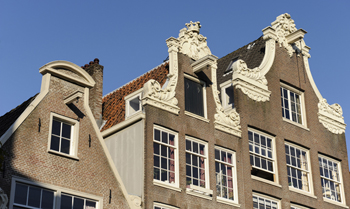
Amsterdam gables
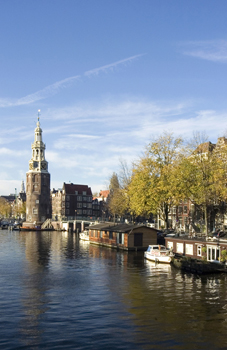
Oudeschans canal
Amsterdam has grown up in the past decade or so. It is a slicker, more cosmopolitan place than it once was, more business-minded, less eccentric, and overall more integrated into the European mainstream. Yet it still enjoys a reputation as one of Europes most relaxed cities and with some justification. Theres a laid-back feel to the streets and canals (and its people) that you just dont get in any other European city. Of course, it remains a place for Sixties throwbacks who just want to get stoned, and for well-oiled gangs of blokes on the prowl in the still notorious Red Light District. But it also has a small-city feel: it doesnt take long to get from place to place, and thanks to its canals many parts of the centre are uncongested and peaceful.
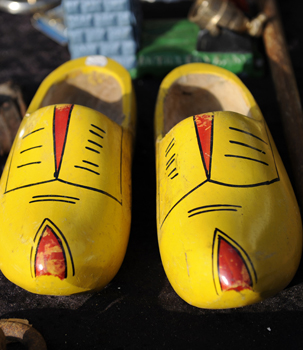
Amsterdams welcoming attitude towards visitors has been shaped by the liberal counterculture of the last four decades, but its emphatically no longer the hippy haven it once was. In fact, in the last few years the city has been more or less absorbed into the rest of Europe, with not only high-end bars and clubs muscling in on its more traditional haunts, but also with the emergence of crime and drug problems that for decades seemed to have passed Amsterdam by. However, some things havent changed, and its hard not to feel drawn by its vibrant, open-air summer events, by the cheery intimacy of its cafs, and by the Dutch facility with languages; just about everyone you meet in Amsterdam will be able to speak good-to-fluent English, and often more than a smattering of French and German too.
Amsterdam is still far from being as diverse a city as, say, London or Paris; despite the huge numbers of immigrants from the former colonies in Surinam and Indonesia, as well as from Morocco and Turkey, to name but a few, almost all live and work outside the centre and can seem almost invisible to the casual visitor. Indeed, there is an ethnic and social homogeneity in the city centre that seems to counter everything you may have heard about Dutch integration. Its a contradiction that is typical of Amsterdam. The city is world-famous as a place where the possession and sale of cannabis are effectively legal or at least decriminalized and yet for the most part Amsterdammers themselves dont really partake in the stuff. And while Amsterdam is renowned for its tolerance towards all styles of behaviour, a primmer, more conventional big city, with a more mainstream dress sense, would be hard to find. Indeed, these days the city is trying to reinvent itself, geared towards a more up-market kind of tourist who is a little less fixated on smoking and drinking. In recent years, a string of hardline city mayors have had some success in diminishing Amsterdams image as a counterculture icon, instead touting it as a centre for business and international high finance. Almost all of the inner-city squats, which once defined local people-power, are gone or legalized; many coffeeshops, especially those in the Red Light District, are closing; and the Red Light District itself for years the beacon of the citys laissez-faire attitude is being cleaned up, and many of its sleaziest establishments closed down. The cityscape, too, continues to evolve, with large-scale urban development on the outskirts and regeneration within.
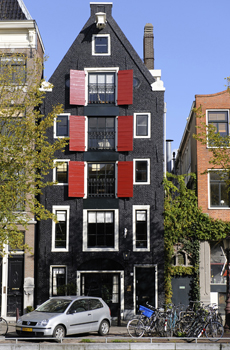
Canal house on Prinsengracht
Nevertheless, Amsterdam remains a casual and intimate place, and Amsterdammers themselves make much of their city and its attractions being gezellig, a rather overused Dutch word roughly corresponding to a combination of cosy, lived-in and warmly convivial. Nowhere is this more applicable than in the citys unparalleled selection of drinking places, whether you choose a traditional brown caf or one of a raft of newer, more stylish bars. The city boasts dozens of excellent restaurants too, with great Indonesian options and a host of increasingly adventurous Dutch establishments. As for cultural attractions, the city holds its own in contemporary European film, dance, drama and music; it harbours several top-notch jazz venues, as well as the Concertgebouw, home to one of the worlds leading orchestras, and the state-of-the-art Muziekgebouw, the citys prestigious venue for opera and orchestral music. The club scene is relatively restrained, although a wealth of gay bars and clubs partly justifies Amsterdams claim to be the Gay Capital of Europe.
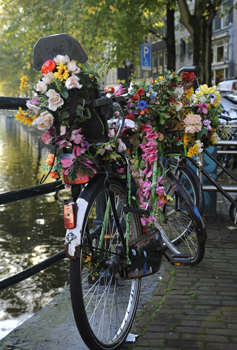
Amsterdam bicycle
|
So much to see, so little time
Amsterdam is perfect for short breaks: its small, so you can amble about almost everywhere and see pretty much everything; there are very few must-see sights, so you dont have to spend half your time feeling guilty about the cultural icons you should be visiting; and there are literally hundreds of enticing bars, cafs and restaurants where you can take the weight off your feet between attractions. The itineraries below give an idea of how to plan your time. Mostly designed around key sights, they cover everything from a flying visit to a full week in the city, and can be used as rigidly, or as flexibly, as you like.
Two days
Dam Square Anne Frank Huis Red Light District Oude Kerk Rijksmuseum Van Gogh Museum Leidseplein Grachtengordel South Museum Van Loon/Museum Willet-Holthuysen Rembrandtplein
Three days
As above, plus:
Westerkerk Koninklijk Paleis Brouwersgracht Western docklands

